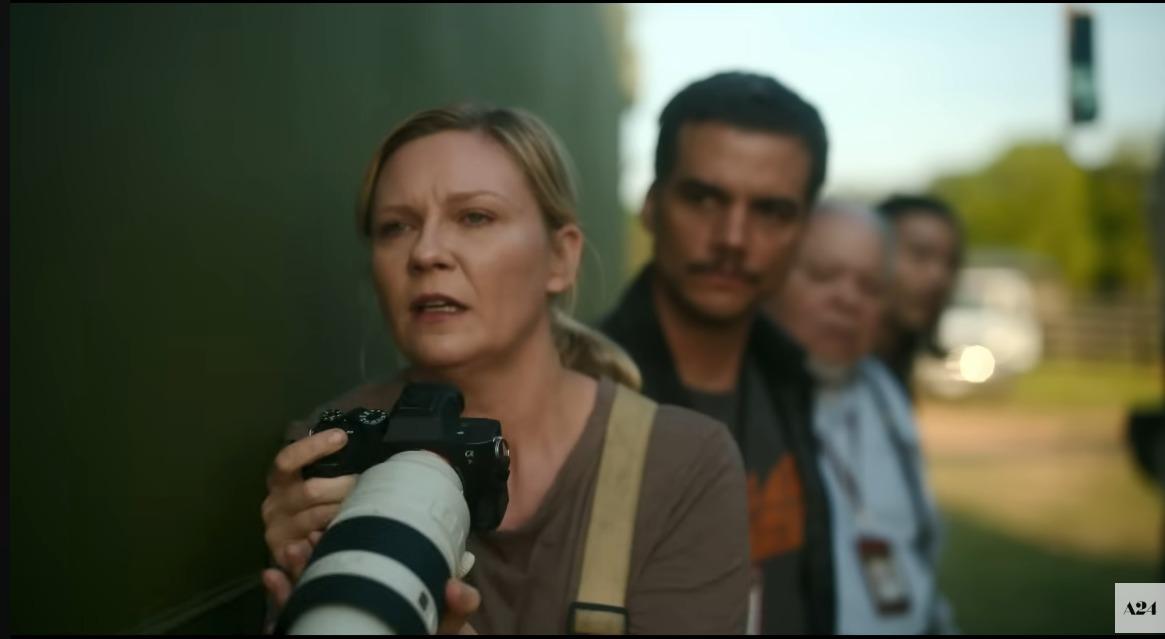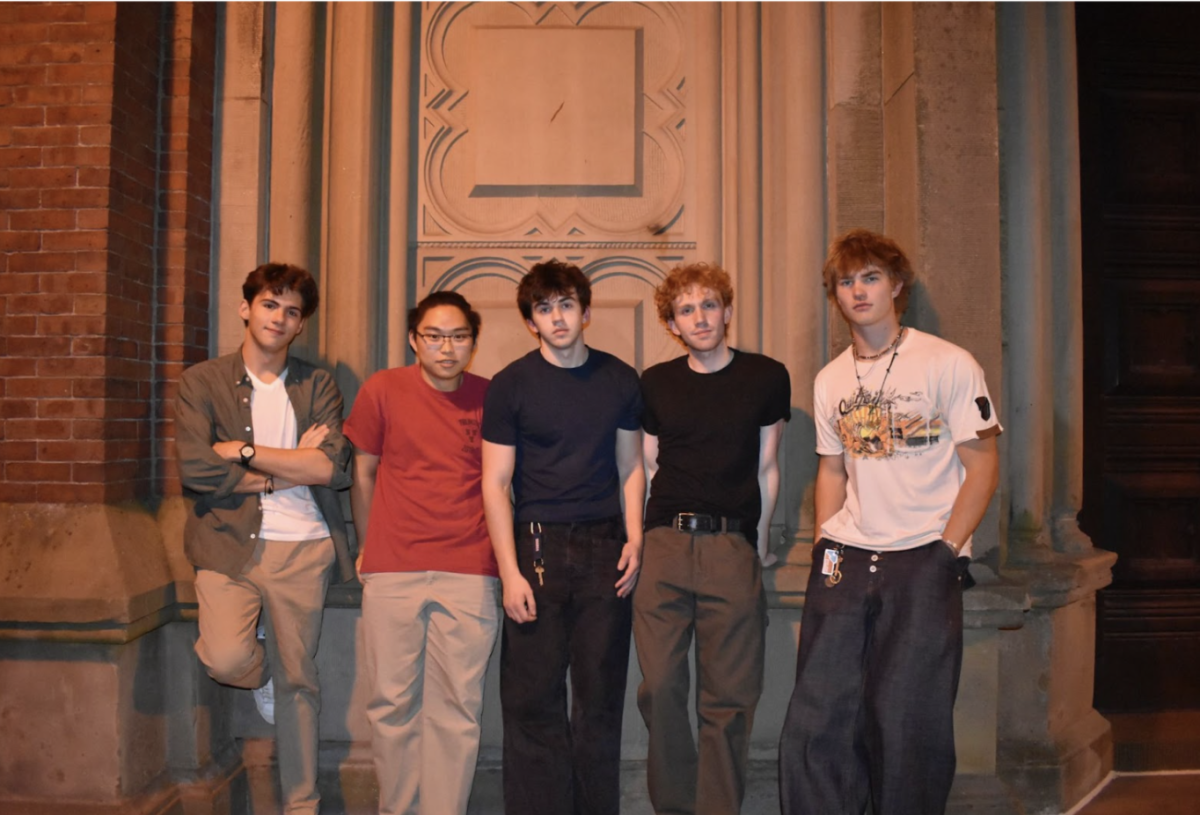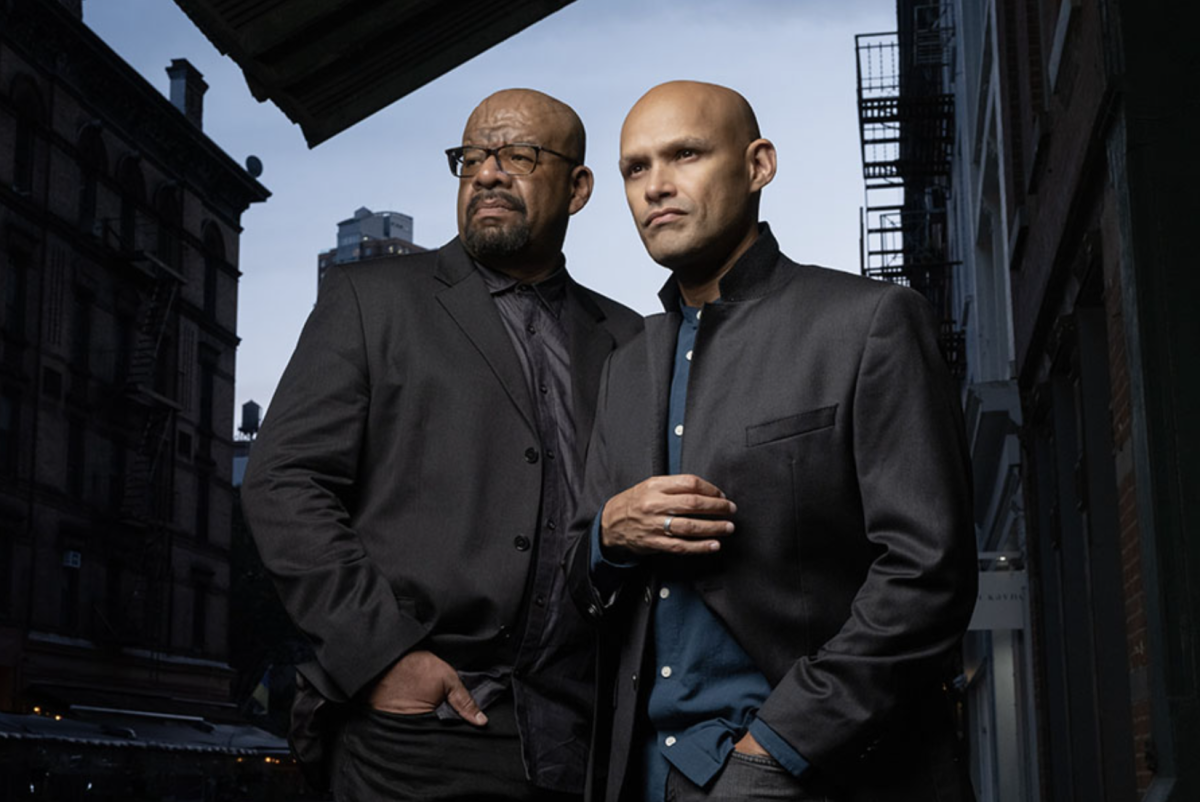Alex Garland’s “Civil War” has been one of the most anticipated movies of the year. A24’s biggest film yet follows a group of journalists documenting a nationwide civil war as they travel from New York to Washington, D.C. in order to interview the President of the United States. While there was much hype around the film leading up to its release, the film has received mixed reviews from moviegoers. The main cast, including Kirsten Dunst, Wagner Moura, Cailee Spaeny and Stephen McKinley Henderson, have been praised. The sound, which provided a visceral experience of war sounds for the audience was perfectly designed. For me, the film photos spliced between moments of battle added a level of charm to the movie, as well as the soundtrack. But the #1 critique from viewers? The film’s dedication to neutrality.
When I first saw the trailer for “Civil War,” I made my conclusions about the content of the film like many other people. I pretty much assumed that the film would center around a conservative, Trump-esque figure who leads America towards societal decline. I expected a mention of a Jan. 6-like event that triggered the current war in the film, and for the sides of the conflict to be clear cut and on the nose. And trust me, if that was the movie Garland gave us, then I would have loved it.
But closer to the film’s release date, A24 released a map outlining the breakdown of alliances in the film’s fictional United States. It revealed that in the film, California and Texas had formed an alliance known as the Western Forces. From that, I knew that this film wasn’t going to be what I was expecting. Once “Civil War” was released and the reviews began to roll in, my suspicions about this film were further confirmed.
But still, I went to the theater with an open mind and heart, ready to see another film from the mind behind ‘Ex Machina’ and ‘28 Days Later.’ And after sitting on this movie for a few days, I can say that “Civil War” wasn’t what audiences wanted, but it’s what we needed. And that’s because “Civil War” seeks to vindicate no one.
Garland’s fictional United States is, in fact, fictional. Again, California and Texas are allies in the film, which is something that seems less likely to happen in real life than pigs flying. But in the world Garland has created, it’s possible for this alliance to happen. Yet still, for those caught up with realism, Garland invites the viewer to fill in the “gaps” of this story by giving the audience little context. Based on the costuming of the Western Forces soldiers, you can see that this alliance is moreso among the people of California and Texas, rather than their governments. This choice doesn’t give audiences what they wanted to see: a realistic battle between a conservative and liberal state over the fundamental values they each stand on.
Garland’s fictional civil war is not only seemingly far from reality, but it’s clouded in ambiguity. Garland offers no political motive for either side of this war, nor does he offer any context for what started the war. In fact, the only thing we do know is that there are sides. While watching the film, this felt somewhat unsatisfying. Like any other person, my brain craves this traditional structure. It needs for there to be sides with clear motives. It needs for there to be good versus evil, and it needs that good to prevail over evil. It needs these things to be able to understand the subject matter of a film like “Civil War.”
Garland’s film does not concede to the viewer’s expectations. Instead, he offers us small crumbs of context that beg the audience to paint a bigger picture for themselves. For instance, one of Joel’s (played by Wagner Moura) interview questions for the President of the United States is whether or not he regretted ordering airstrikes against civilians. In addition to this, the film’s protagonists run into conflict with several people along the way to D.C., and the map given by A24 provides us with a bit of context for where these major conflicts occur, and whether or not the people in the places reside in states that are loyal to the United States.
With this in mind, it makes sense that the reviews for the film are mixed. People like realism, and we like for our expectations to be fulfilled. And with the amount of anticipation around this movie, leaving our expectations unmet feels even more unsatisfying. Regardless of this, what made “Civil War” great to me was the fact that it didn’t give me what I wanted.
This film’s lack of political agenda gives it the opportunity to speak across audiences about the atrocious, destructive reality of war. This is the film that people need to see right now, as it is not one that validates the fears of one side of the political spectrum while simultaneously alienating the other side from the true message of the film. This film’s message was never meant to be about how dangerous conservatives are to democracy. It’s about how in the end, if we allow an authoritative leader to lead us down the path of civil war, we all lose. And ultimately, the motives of war get lost and overshadowed by the mutual destruction faced by both sides.
The neutrality of “Civil War” also does justice to its subjects: journalists. Journalists are meant to be neutral purveyors of truth who document the story as it happened. The film is nearly perfect at remaining apolitical, just as journalists are nearly perfect at doing the same. And similarly to journalists, there are moments in “Civil War” where the film does slip up and reveals the slightest bit of its own politics. But overall, the film does a great job of really diving into the psyches of journalists. I’d even say that this film becomes a kind of journalist in itself, doing whatever it takes, even displaying very graphic and uncomfortable imagery, to give its audience the truth about the brutality of war.






